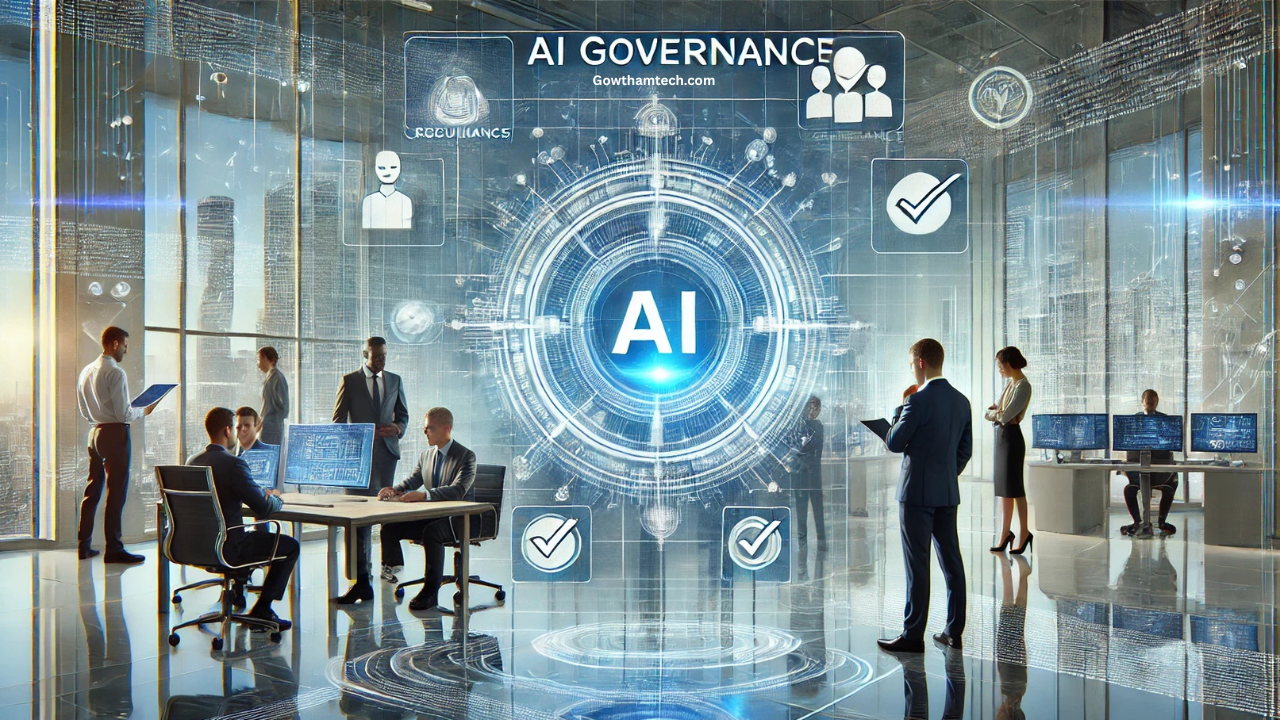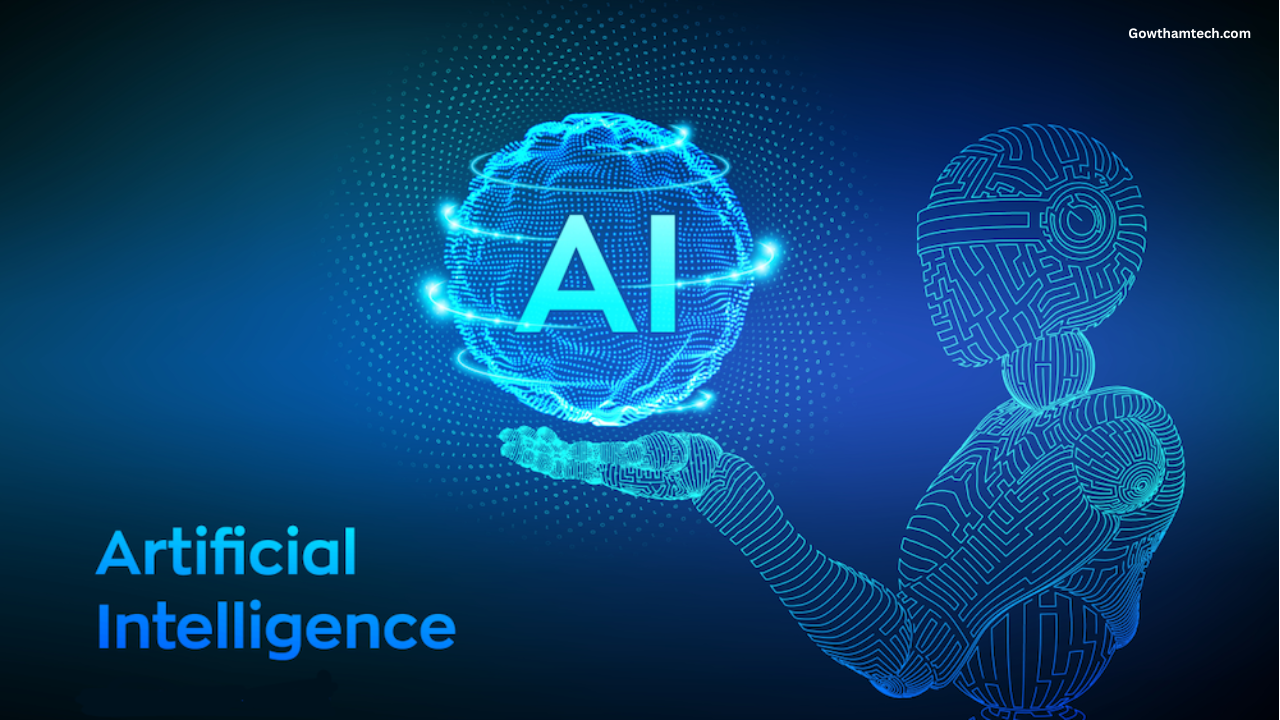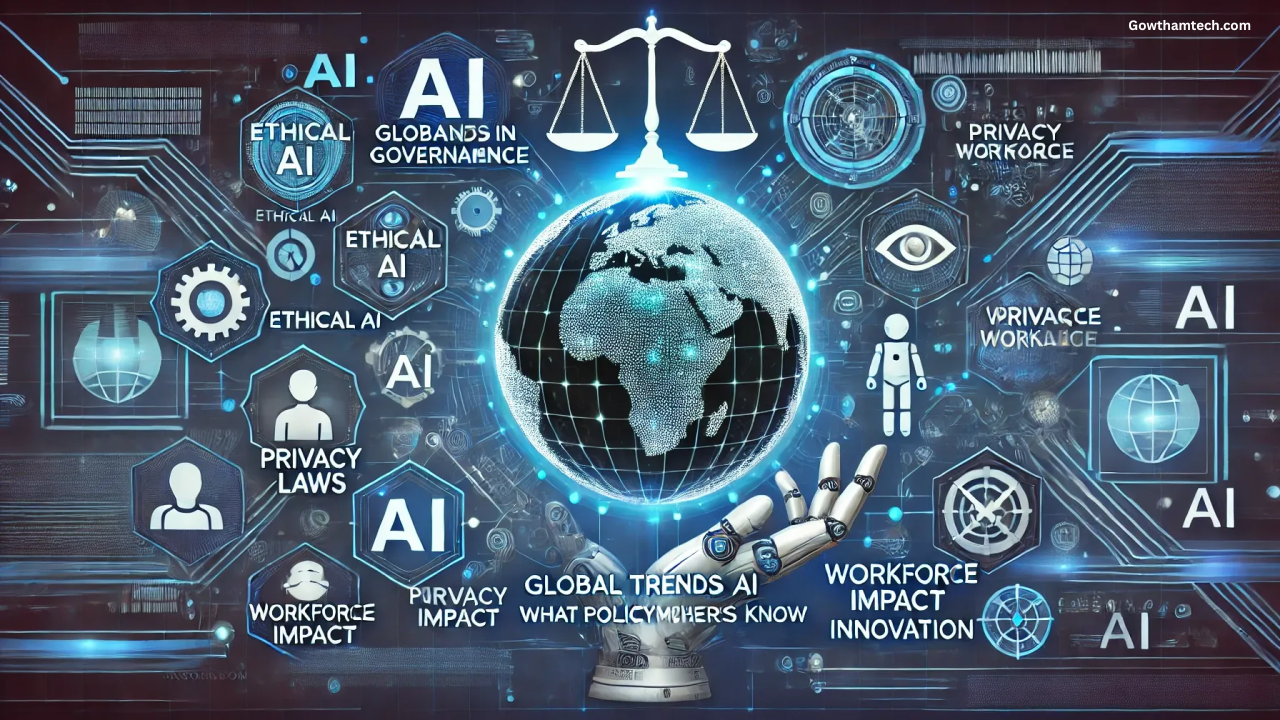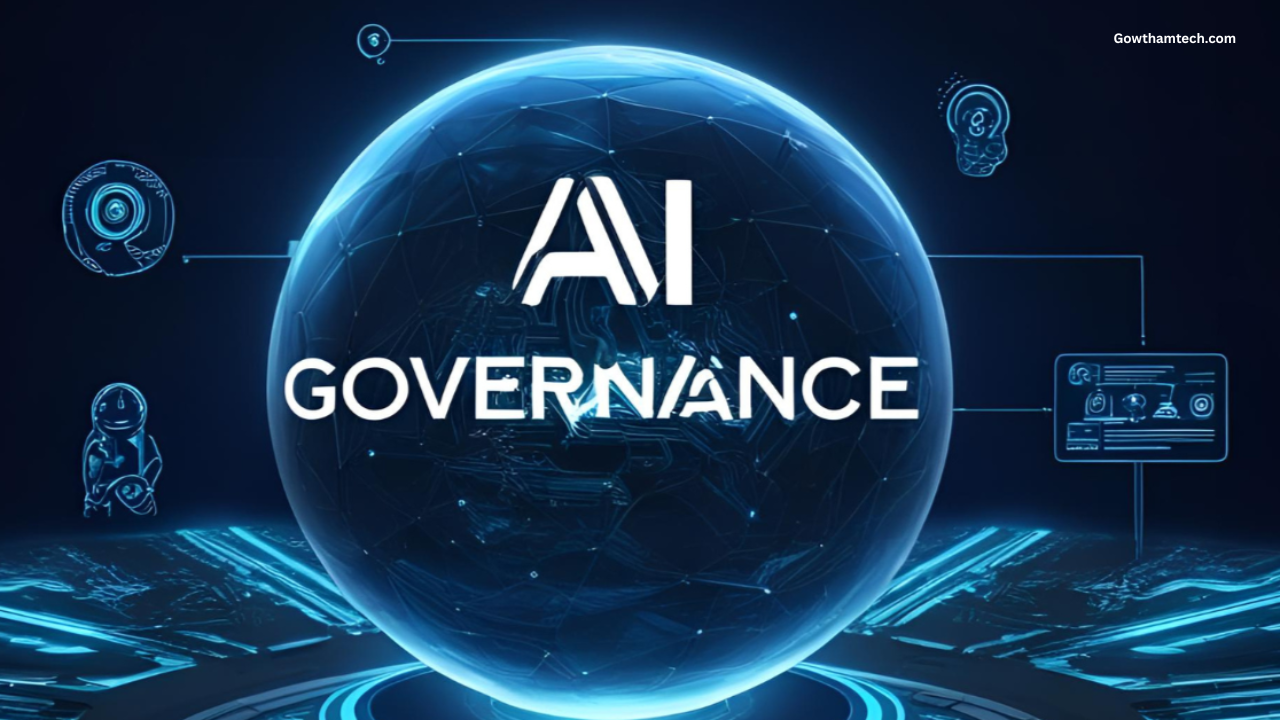The core of AI Governance Platform is AI Governance Platform is central fully integrated software system created to aid organizations to implement accountable AI concepts throughout the AI development. It includes the equipment workflows as well as surveillance procedures to make sure that AI technology is developed and used in manner that is honest transparent as well as secure and in compliance to both internal and external rules.
Imagine it as an essential nervous system to support the companys AI initiatives. Without it various groups (data science as well as legal compliance and business divisions) work in silos.
Data scientists create models that focus on the performance of their models lawyers have to struggle to determine risks they arent familiar with as well as business leaders dont have access to the AI algorithms that drive their decisions.
Haphazard approach to AI is inefficient and carries danger. AI Governance Platform can break down the silos and creates single source of information and standard process to manage AI risks from the moment of conception to retirement.
They arent simple dashboards. They are management systems active integrated directly with the MLOps (Machine Learning Operations) pipeline. These platforms provide tools that are automated to:
- Catalogue and Inventory: Maintain comprehensive database of the various AI models that are in use throughout the company.
- Monitor and test Test models continuously for accuracy performance bias and fairness both prior to and after the deployment.
- manage and control Automate workflows for models review approval and for deployment.
- Report and Document Produce audit trails as well as conformity reports on regular basis to ensure that stakeholders and regulators are satisfied.
In establishing this one stop control framework AI Governance Platforms change the vague principles in “Responsible AI” into concrete tangible quantifiable and legally binding guidelines. They bridge the space between an organizations ethics and the daily real world realities of AI creation and implementation. Achieving 2025 with one of these advanced AI Governance Platforms will be sign of an experienced innovative and resilient organization.
5 Pillars of Modern AI Governance Platform
To fully comprehend their worth is to be aware of the fundamental functions provided by an AI Governance Platform can provide. The capabilities are grouped in five interlinked pillars that together allow end to end monitoring of the AI process.
Pillar 1: Risk and Compliance Management : This is the core element. The AI Governance Platform acts as central point of control for the murky web of AI laws including The EU AI Act and internal ethical guidelines. It enables organizations to connect these laws to particular AI projects to automate risks assessments based on application of the model (e.g. high risk projects such as hiring or credit scoring) and keep the immutable audit trail for every governance activity. If regulators request evidence of conformity the platform is able to create detailed on demand reports showing due diligence and finding countless hours in manual effort.
Pillar 2: Model Lifecycle Management and Transparency : Governance that is effective requires full visibility. AI Governance Platforms offer central inventory of models that provides single point of fact for every model within the company. Each model is tracked by it tracks the most important information including its primary purpose the source of data the development timeline as well as the history of versions and the owner. Importantly this component includes instruments for explaining (XAI) which include SHAP or LIME integrations. They help to deconstruct “black box” models by revealing which components are the most effective in their forecasts and provide the necessary transparency for auditors developers and even business customers.

Pillar 3: Bias Fairness and Ethics Monitoring : This could be the most crucial pillar in maintaining brand integrity and an equitable outcome. An effective AI Governance Platform provides range of software to quickly detect and assess the degree of bias that exists in input data for training and outputs of models over variety of identified aspects (e.g. gender race and age). The platform allows organizations to establish fairness thresholds and get real time notifications when models behavior changes or begins to display distinct patterns. few advanced platforms provide bias mitigation tools which can assist developers in retraining models to become more fair and actively promoting fairness instead of only passively monitoring it.
Pillar 4: Security and Robustness : AI model can be also great corporate asset but also vulnerability to security. This particular pillar is focused on safeguarding models from potential threats. AI Governance Platforms provide instruments to check for the robustness of models against attacks from adversaries in which criminals input deliberately crafted information to fool models into making inaccurate prediction. They also keep track of changes in the drift of concepts and data warning teams when the models performance is declining due to the real world data theyre observing is significantly different from the base data. This helps ensure that the models effectiveness and security all through its life.
Pillar 5: Collaboration and Accountability : Governance is sport for teams. Fifth pillar offers processes and tools for collaboration that are required to connect different stakeholder groups. The AI Governance Platform allows for communications between data scientists lawyers risk managers as well as business executives. It streamlines the review and approval processes and ensures that models is not able to be used without clear approval of all the relevant stakeholders. In defining clearly the roles and responsibilities (e.g. models owner validater approvaler) within the platform it lays out distinct lines of accountability to every AI model in use.
Why Your Organization Needs an AI Governance Platform in 2025
The issue for leaders in business in 2025 is not whether they require AI governance however it is what method theyll apply the technology. Although some might try to create solutions on their own or utilize manual processes but the scale and complexity of the modern AI require an AI Governance Platform strategic requirement. The value of such platform is obvious and broad.
- Explore the Regulatory Minefield The worldwide regulatory environment for AI is advancing in rapid manner. This is the EU AI Act with the risk based method and heavy fines for violators will only be the beginning. Monitoring and logging the compliance of dozens if not hundreds AI models is an insurmountable task. AI Governance Platforms simplify this task by connecting the regulations to controls producing the necessary documentation and an audit trail that is legally enforceable and will withstand the scrutiny of regulatory agencies. The platform transforms compliance from an expensive cost centre into an easily managed automatic procedure.
- Limit the risks to reputation and financial risk Reduce Risk to Reputation and Financial. single AI malfunction can result in catastrophic loss of reputation. Unbiased hiring algorithms can result in to litigations involving class actions. Unsound credit scoring models can lead to massive economic losses as well as regulatory fines. Chatbots for customers that produce offending content may create lasting and immediate branding damage. The AI Governance Platform is alert system for early warning constantly checking for such threats and permitting organizations to take action in advance of the event of failure. Its an important security measure against the many threats posed by non managed AI.
- Create and sustain trust in customers The digital age is place where trust is the most valuable money. People are more and more cognizant of the potential dangers of AI and demand greater transparency and fairness from firms they trade with. With strong management framework using the use of an AI Governance Platform that allows companies to effectively and legally demonstrate their dedication to accountable AI. It builds trust increases the loyalty of their brand and acts as an effective market differentiation.
- Increase the speed of responsible AI innovation: In paradox having strong safeguards put in place could accelerate the pace of innovation. If data science teams are able to follow established rules for conduct and automated instruments to aid them in building solid and reliable models they will be able to move quicker and more confidently. AI Governance platform reduces confusion and speeds up the process of reviewing and approving and reduces the amount of amount of time needed to transfer model from the laboratory to production in safe manner. This allows users to increase the size of your AI initiatives without affecting the risk level.
- Increase Model Performance and Return on Investment The role of governance is not just about risks; its also about the value. Continuous monitoring capabilities provided by AI Governance Platforms do not limit themselves to unfairness and bias. They also keep track of the accuracy of models drift in data as well as other performance indicators. When teams are alerted whenever models performance starts decreasing the platform makes sure that AI platforms are operating efficiently maximising their value to the business and offering greater ROI on investments.
Key Features to Look for in an AI Governance Platform
There is market of AI Governance Platforms is expected to grow significantly in 2025 with variety of companies offering variety of options. The selection of the ideal solution for your company will require careful analysis of its capabilities in relation to your particular needs AI maturity level as well as the needs of the industry. These are the essential features to be looking for.
- Unified Model Inventory: The platform needs to offer single searchable index for all models built using AI/ML regardless of where they were developed or stored (on prem cloud on prem or cloud.). The inventory is the sole source of truth and should be able to capture rich metadata about every model.
- Automated real time monitoring and alerting Automated manual checking is not enough. It should provide constant automatic surveillance of models being produced. It must allow users to set custom thresholds to many different metrics including accuracy and data drift as well as concept drift and fairness. It should also sending real time notifications to the right teams if an appropriate threshold is reached.

- Complete explanation (XAI) Toolkit An elite AI Governance Platform is expected to provide robust and easy to use explainability tools. The explanations should be an explanation of the models global operation (how the model functions overall) as well as local explanations (why it was able to make certain forecast for one number of data points). It must be compatible with popular methods such as SHAP LIME and integrated Gradients.
- Advanced Bias and Fairness Tests: Look for platform with an extensive library of fairness related metrics (e.g. the demographic parity and even odds) and the capacity to examine biases across different protected groups as well as their interconnections. Some platforms offer instruments to show and evaluate different fairness related tradeoffs to help you make better decisions.
- Customizable Workflows Approval Chains Governance doesnt have to be one size fits all solution. This platform will allow users to create and easily enforce specific workflows that allow model review as well as validation and approval. This will include role based access control as well as the capability to develop multi stage approval procedures which involve all stakeholders including law enforcement compliance and other business functions.
- seamless MLOps as well as Cloud Integration AI Governance Platform should be integrated in with your existing technology stack. Check out integrated integrations that are pre built with the most well known MLOps software (e.g. MLflow Kubeflow) and data platforms (e.g. Databricks Snowflake) as well as all important cloud services (AWS Azure GCP). This allows for smooth transfer of models and data within the ecosystem of governance.
- robust auditing and reporting: The platform must offer an unalterable and recorded audit log that is timestamped for each move that is taken. Additionally it should have an efficient reporting engine that produces customizable reports for diverse audiences. This includes executive dashboards displaying the total AI risks to comprehensive compliance records for auditors from outside.
Implementing an AI Governance Platform: 5 Step Roadmap
Implementing the AI Governance Platform is major initiative which goes beyond installing software. It requires an method that blends processes technology and human resources. The use of plan can help ensure that the implementation is successful and provides value for long time.
First Step: Review Your current situation and establish the goals you want to achieve: Before you can select platform it is important to understand your initial point of departure. Review the existing AI models and evaluate the organizations AI development. Identify your highest risk AI applications. What are your main goals to govern? Do you want to reach certain date for regulation limit the number of model errors in production or create responsible public facing AI program? clear set of goals should guide your all encompassing implementation.

Second Step: Set Up your Artificial Intelligence Governance Framework: Technology is an enabler but requires framework to implement. Its the “people and process” step. Establish an inter functional AI governance committee comprised of participants of IT data science and legal departments as well as risk and other key businesses. The committee is accountable for the definition of your companys AI guidelines policies and guidelines. Theyll define risks tiers create reviewing procedures and establish who is responsible and what they are accountable for. The framework will provide the guidelines for your selected AI Governance Platform can be able to automate and implement.
- Choose the best platform for you: With your goals and the framework set it is now time to assess different vendors. Utilize this “Key Features” section of this guide to create checklist. Ask for demos customized to the specific needs of your business. Test proof of concept (POC) using at least two models of high value to evaluate the platforms real world capabilities as well as its easy integration into your MLOps pipeline. Pick partner not just company but one which understands your market and will be able to support your growth as you expand.
Step 4 Phased Integration and rollout: Dont try to make the ocean boil. Start by implementing pilot program with focus on specific department or the most crucial AI applications. Incorporate your AI Governance Platform alongside the MLOps instruments used by this group. Make use of this pilot to modify the workflow create your dashboards for monitoring as well as train the first set of users. Learnings and success during this trial will create momentum and serve as model for an organization wide implementation.
- Foster an environment of responsible AI: The most effective AI Governance Platform can fail when it is seen as hurdle for bureaucrats. It is essential to create an environment where every person involved throughout the AI process feels belief in the importance of accountable AI. Create classes to inform the product managers data scientists and leaders in business regarding your governance structure as well as how to utilize the system. Be sure to communicate early and often on the advantages of governance and how it can help everyone develop better safe more secure and useful AI. The shift in the culture ensures that governance is sustainable over the long term.
The Future of AI Governance Platforms: Trends to Watch
The area of AI governance is growing at the same speed as AI itself. Leading AI Governance Platforms that are in use today are already anticipating to take on the next set of opportunities and challenges. Below are the most important patterns that will define the direction of this vital technology.
- Governance and governance for Generative AI and LLMs: The rapid growth of Large Language Models (LLMs) along with other kinds of Generative AI presents new and complicated range of governance issues that include hallucination toxicity data privacy the form of prompts and copyright concerns. The future version of AI Governance Platforms include specialized tools to deal with the particular threats associated with GenAI. This will comprise real time prompts and response monitoring toxic detection as well as methods to make sure LLM outputs are in line with the brands voices and ethical standards.
- Automation is increasing in addition to “Self Healing” Governance: As AI ecosystems grow increasing manual intervention is likely to be major bottleneck. The future platforms will include greater automation and move toward an “self healing” model. For instance if it detects an imbalance in fairness the system could automatically initiate an approved retraining process that includes bias mitigation algorithms to resolve the issue using little human supervision. The result is that governance will become more flexible and scalable.
- The Rise of “Governance as Code”: Inspired by the “Infrastructure as Code” movement in DevOps “Governance as Code” will become standard practice. This involves setting governance policies that include fairness equity and guidelines for compliance in code that is controlled tested and applied automatically within the pipeline of CI/CD. This allows for an easier and consistent implementation of governance policies and embedding them directly in the process of development.
- The focus is on sustainability as well as “Green AI “: Beyond 2025 the public is becoming aware of the substantial environmental impacts when training massive AI models. The future AI Governance Platforms will likely include tools to monitor the consumption of energy as well as carbon emissions that are associated with the AI lifetime. These will allow companies to assess the viability of their AI initiatives and take more educated decisions regarding the size of models as well as training frequency and the efficiency of their hardware.
- Standardization and interoperability In the coming years as the market develops and matures there will be more pronounced push to standardize the way governance metrics and metadata are communicated. This will facilitate more interoperability among different MLOs as well as AI Governance Platforms and will enable companies to create best of breed governance platforms that are not tied to one vendors market.
Your Strategic Imperative for 2025
We are at an turning point in the evolution of AI. The ability of AI to propel advancement is undisputed however equally are the risk they pose when left uncontrolled. In the new world it is imperative to have effective governance. an attribute its the base upon which trustworthiness and lasting AI can be constructed. AI Governance Platforms are emerging as the essential technology that can translate AI concepts into action.
This document has clarified the vital role of these platforms. It outlines their main tasks the convincing commercial case to adopt them as well as the methods for implementing them successfully. From managing complex regulations to reducing the risk of catastrophic catastrophes to creating trust among customers and speeding up technological advancement the advantages are obvious. Inability to implement strong AI Governance platform is no longer just matter of mistake; its an essential business mistake which exposes an enterprise to substantial financial legal and reputational risk.
The path to advanced AI management is constant one however its one that needs to be started today. Through investing in the best technologies creating clear procedures and creating the culture of accountability your company can tap into the full power of AI by ensuring trust and honesty. By 2025 the top performing firms will not be the ones that have the strongest AI. But they will have the most trusted AI. This trust is created by well managed secure and managed by utilizing robust AI Governance Platforms.





